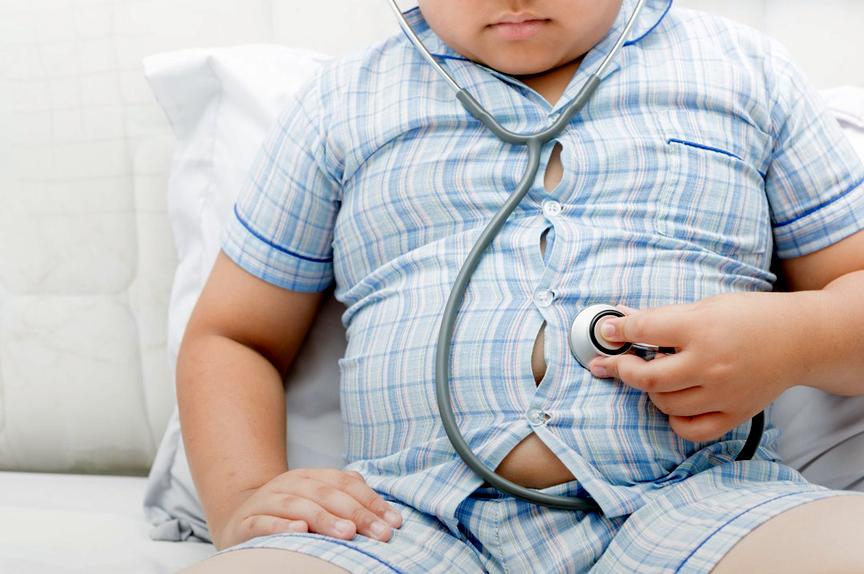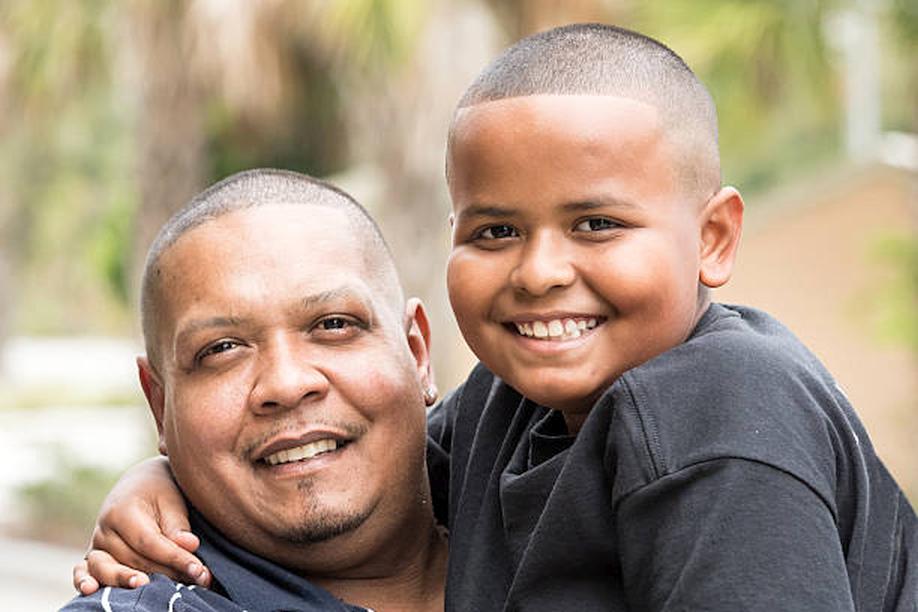By Mayo Clinic
Diagnosis

The BMI (Body Mass Index) helps indicate if your child is overweight for his or her age and height.
Using the growth chart, your doctor determines your child’s weight percentile, and compares it with others’ children of the same sex and age. For example, if your child is in the 80th percentile, it means that compared with other children of the same sex and age, 80 percent have a lower weight or BMI.
Cutoff points on these growth charts, established by the Centers for Disease Control and Prevention, help identify children who are overweight and obese:
BMI between 85th and 94th percentiles means overweight.
BMI 95th percentile or above means obesity.
Treatment

Treatment usually includes changes in your child’s eating habits and physical activity level. In certain circumstances, treatment might include medications or weight-loss surgery.
Treatment for children who are overweight

The American Academy of Pediatrics recommends that children older than 2 and adolescents whose weight falls in the overweight category be put on a weight-maintenance program to slow the progress of weight gain. This strategy allows the child to add inches in height but not pounds, causing the BMI to drop over time into a healthier range.
Treatment for children who are obese

Children ages 6 to 11 who are obese might be encouraged to modify their eating habits for gradual weight loss of no more than 1 pound (or about 0.5 kilogram) a month. Older children and adolescents who are obese or severely obese might be encouraged to modify their eating habits to aim for weight loss of up to 2 pounds (or about 1 kilogram) a week.
The methods for maintaining your child’s current weight or losing weight are the same: Your child needs to eat a healthy diet — both in terms of type and amount of food — and increase physical activity. Success depends largely on your commitment to helping your child make these changes.
Healthy eating

Parents are the ones who buy groceries, cook meals and decide where the food is eaten. Even small changes can make a big difference in your child’s health.
When food shopping, choose fruits and vegetables. Cut back on convenience foods — such as cookies, crackers and prepared meals — which are often high in sugar, fat and calories. Always have healthy snacks available.
Limit sweetened beverages. This includes those that contain fruit juice. These drinks provide little nutritional value in exchange for their high calories. They can also make your child feel too full to eat healthier foods.
Limit fast food. Many of the menu options are high in fat and calories.
Sit down together for family meals. Make it an event — a time to share news and tell stories. Discourage eating in front of a TV, computer or video game screen, which can lead to fast eating and lowered awareness of the amount eaten.
Serve appropriate portion sizes. Children don’t need as much food as adults do. Allow your child to eat only until full, even if that means leaving food on the plate. And remember, when you eat out, restaurant portion sizes are often way too large.
Physical activity

A critical part of achieving and maintaining a healthy weight, especially for children, is physical activity. It burns calories, strengthens bones and muscles, and helps children sleep well at night and stay alert during the day.
Good habits established in childhood help adolescents maintain healthy weights despite the hormonal changes, rapid growth and social influences that often lead to overeating. And active children are more likely to become fit adults.
To increase your child’s activity level:
- Limit TV and recreational computer time to no more than 2 hours a day for children older than 2. Don’t allow children younger than 2 to watch television. Other sedentary activities — playing video and computer games, talking on the phone, or texting — also should be limited.
- Emphasize activity, not exercise. Children should be moderately to vigorously active for at least an hour a day. Your child’s activity doesn’t have to be a structured exercise program — the object is to get him or her moving. Free-play activities — such as playing hide-and-seek, tag or jump-rope — can be great for burning calories and improving fitness.
- Find activities your child likes. For instance, if your child is artistically inclined, go on a nature hike to collect leaves and rocks that your child can use to make a collage. If your child likes to climb, head for the nearest neighborhood jungle gym or climbing wall. If your child likes to read, then walk or bike to the neighborhood library for a book.
Medications

Medication might be prescribed for some adolescents as part of an overall weight-loss plan. The risks of taking prescription medication over the long term are unknown, and medications’ effects on weight loss and weight maintenance for adolescents is still in question.
Weight-loss surgery

Weight-loss surgery might be an option for severely obese adolescents who have been unable to lose weight through lifestyle changes. However, as with any type of surgery, there are potential risks and long-term complications. Discuss the pros and cons with your child’s doctor.
Your doctor might recommend this surgery if your child’s weight poses a greater health threat than do the potential risks of surgery. It’s important that a child being considered for weight-loss surgery meet with a team of pediatric specialists, including a pediatric endocrinologist, psychologist and dietitian.
Weight-loss surgery isn’t a miracle cure. It doesn’t guarantee that an adolescent will lose all of his or her excess weight or be able to keep it off long term. And surgery doesn’t replace the need for a healthy diet and regular physical activity.
Lifestyle and home remedies

If you’re overweight and thinking of becoming pregnant, losing weight and eating well might affect your child’s future. Eating well throughout pregnancy might also have a positive impact on your baby’s later food choices.
To give your infant a healthy start, the World Health Organization recommends exclusively breast-feeding for 6 months.
For children who are overweight or obese, their best chance of achieving and maintaining a healthy weight is to start eating a healthy diet and moving more. Here are some steps you can take at home to help your child succeed:
Be a role model. Choose healthy foods and active pastimes for yourself. If you need to lose weight, doing so will motivate your child to do likewise.
Involve the whole family. Make healthy eating a priority and emphasize how important it is for everyone to be physically active. This avoids singling out the child who is overweight.
Coping and support

Parents play a crucial role in helping children who are obese feel loved and in control of their weight. Take advantage of every opportunity to build your child’s self-esteem. Don’t be afraid to bring up the topic of health and fitness, but do be sensitive that a child may view your concern as an insult. Talk to your kids directly, openly, and without being critical or judgmental.
In addition, consider the following:
Avoid weight talk. Negative comments about your own, someone else’s or your child’s weight — even if well-intended — can hurt your child. Negative talk about weight can lead to poor body image. Instead, focus your conversation on healthy eating and positive body image.
Discourage dieting and skipping meals. Instead, encourage and support healthy eating and increased physical activity.
Find reasons to praise your child’s efforts. Celebrate small, incremental changes in behavior but don’t reward with food. Choose other ways to mark your child’s accomplishments, such as going to the bowling alley or a local park.
Talk to your child about his or her feelings. Help your child find ways other than eating to deal with emotions.
Help your child focus on positive goals. For example, point out that he or she can now bike for more than 20 minutes without getting tired or can run the required number of laps in gym class.
Be patient. Realize that an intense focus on your child’s eating habits and weight can easily backfire, leading a child to overeat even more or possibly making him or her prone to developing an eating disorder.
The information contained in this article is for educational and informational purposes only and is not intended as health or medical advice. Always consult a physician or other qualified health provider regarding any questions you may have about a medical condition or health objectives.





